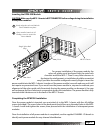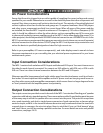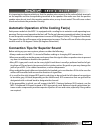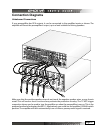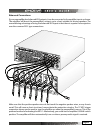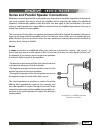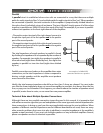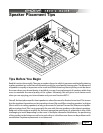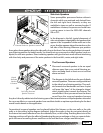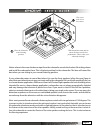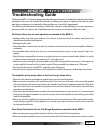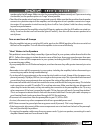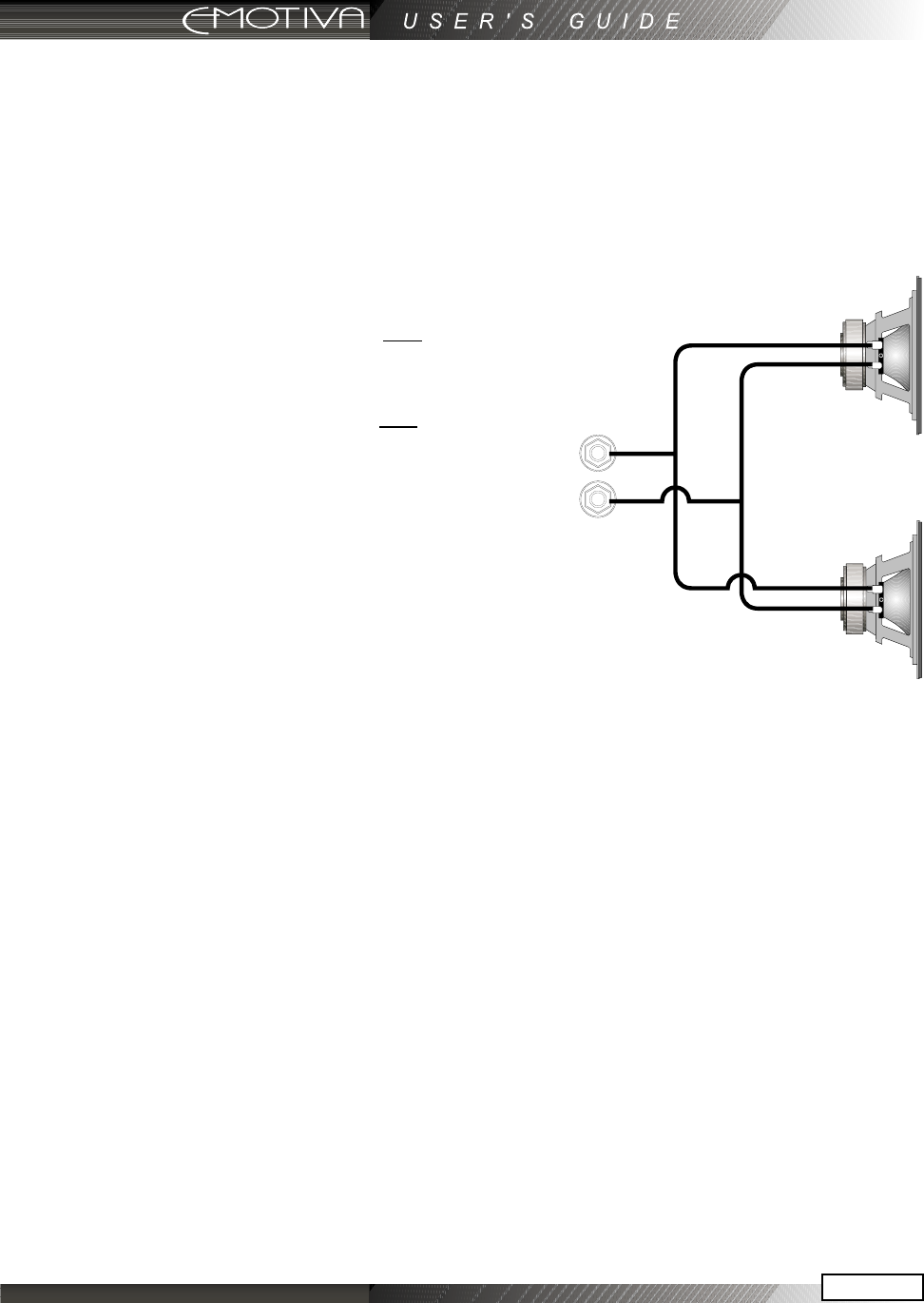
Page 24
Page 25
Parallel
A parallel circuit is established when voice coils are connected in a way that there are multiple
paths for audio signals to ow “in” and multiple paths for audio signals to ow “out”. When speakers
are connected in parallel, the total resistance at the amplier is proportionally divided based on
the value of each individual voice coil resistance. The term “divided” simply means all of the values
together in parallel are a SMALLER value than each all by itself. For example, if you were to parallel-
connect two speakers to the front right channel of the amplier:
• The positive output terminal of the right channel connects to
the positive input post of the rst speaker and to the positive
post of the second speaker.
• The negative output terminal of the right channel connects to
the negative input post of the rst speaker and to the negative
post of the second speaker.
The total impedance of equal speakers in parallel is found
by dividing the impedance of one speaker by the number of
speakers. For example, two eight ohm speakers in parallel is
a four ohm load (eight ohms divided by two), four eight ohm
speakers in parallel is a two ohm load (eight ohms divided
by four).
Parallel connections are harder on the amplier than series
connections, as the total impedance is lower compared to
driving a single speaker, and the amplier must produce
more current to drive them.
Ideally, the total average impedance should be no less than 2 ohms per channel. You must make
sure that the lower impedance does not cause the amplier to overheat, shut down, blow the line
fuse, or pop your circuit breaker. If this happens, you should reduce the number of speakers wired
in parallel, rewire them in series, or use more than one power amplier.
Technical Note about Multiple Speaker Connections
Although there are two possible connection types discussed in this manual, it is imperative that
with either connection type that you use loudspeakers of the same type and nominal impedance for
these connections. In doing so, you have the most predictable outcome for your installation. When
speakers of dierent nominal impedances and/or dierent bandwidths are used, there are many
other acoustic problems that come into play in addition to complex impedance at the amplier’s
speaker output terminals. If you must use multiple speakers on any individual amplier channel,
please use speakers as close to identical as possible.
An example of a PARALLEL
connection between two speakers



